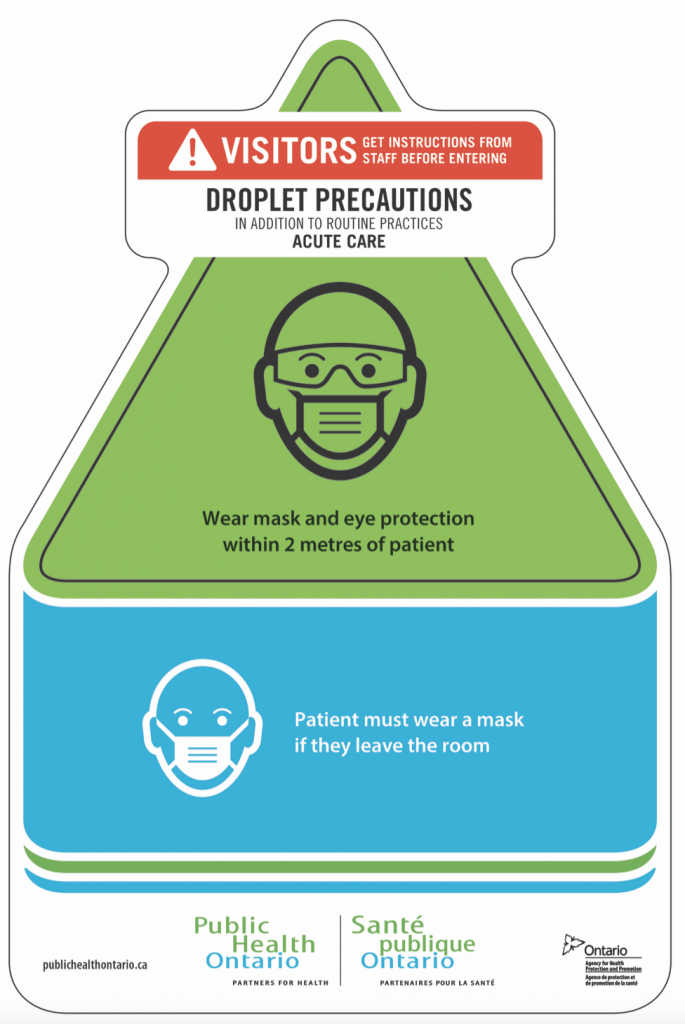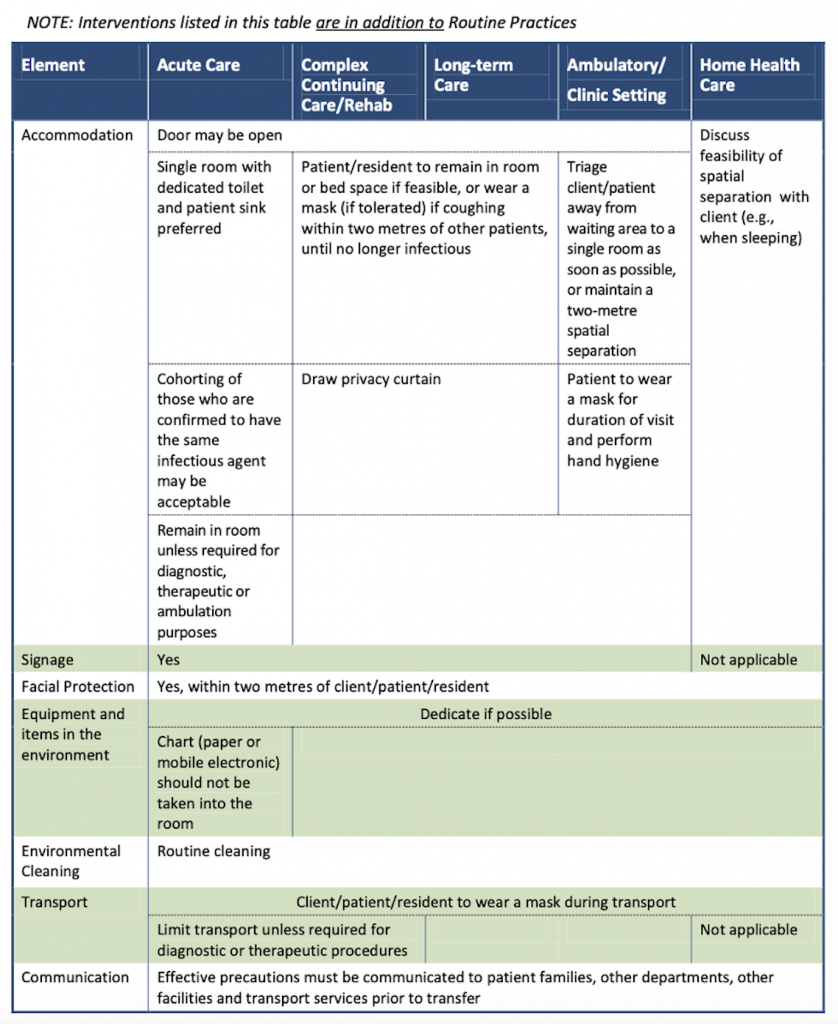Droplet Precautions
Droplet precautions are used in addition to routine practices for clients who are known or suspected to be infected with microorganisms that are spread through the air by large droplets.
Types of microorganisms and unconfirmed conditions in this category include influenza, vomiting of unknown cause, mumps, pertussis, Group A Streptococcus, and unconfirmed cough.
Risk assessment for droplet microorganisms includes:
- Hand hygiene: before, during, and after care as needed.
- Wear a surgical mask and eye protection when providing direct care, or within 2 meters of the client. Follow routine practices (e.g., gown and gloves) as needed according to care being provided.
- The client should be in a private room if possible, and the door can remain open as long as the client is positioned 2 meters away from the entry of the door. If a private room is not available, use a cohort room with clients with the same diagnosis. If using a cohort room, ensure each client has dedicated equipment and that the equipment is cleaned between use.
- Clean area daily and more frequently in high-touch areas.
- Post a droplet precaution sign on the door.

To prevent the transmission of droplet precaution microorganisms, it is important to follow routines practices and the droplet precautions outlined in the following tables by Public Health Ontario (PIDAC, 2012):

https://www.publichealthontario.ca/-/media/documents/B/2012/bp-rpap-healthcare-settings.pdf?la=en
Test your Knowledge
Attribution
This page was remixed with our own original content and adapted from:
Clinical Procedures for Safer Patient Care — Thompson Rivers University Edition by Renée Anderson, Glynda Rees Doyle, and Jodie Anita McCutcheon is used under a CC BY 4.0 Licence. This book is an adaptation of Clinical Procedures of Safer Patient Care by Glynda Rees Doyle and Jodie Anita McCutcheon, which is under a CC BY 4.0 Licence. A full list of changes and additions made by Renée Anderson can be found in the About the Book section.

